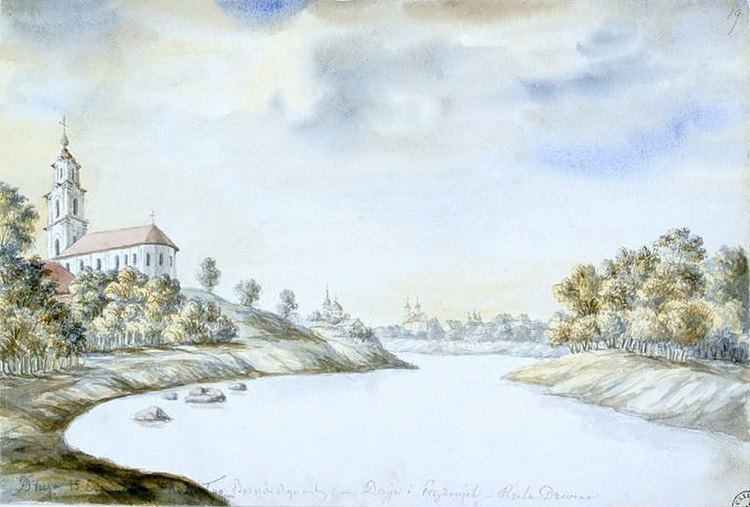Local time Tuesday 11:43 AM | Voblast Vitebsk Region | |
 | ||
Weather 2°C, Wind E at 16 km/h, 95% Humidity | ||
Druya
Druya (Друя, Polish: Druja, Lithuanian: Druja) is a historic townlet in Vitebsk Region, Belarus, about 30 km northeast of Braslaw, located on the left bank of the Daugava River, at the mouth of the Drujka River, opposite the Latvian parish of Piedruja (former Pridruysk). The population is about 1,500 (2006).
Contents
- Druya
- Map of Druya Belarus
- private druya dudol monastery in wakha kechu nangchen qinghai a nyidrag monastery
- References
Map of Druya, Belarus
Medieval Druja was a stronghold of the Massalski princely family fought over by the Grand Duchies of Lithuania and Muscovy through much of the 16th and 17th centuries. Maciej Stryjkowski mentions it in his chronicle when describing the events of 1386. Ownership passed to the Sapieha family in the 17th century. The fortified suburb of Sapieżyn was founded by Jan Stanisław Sapieha in 1618.
The town's oldest building is a Baroque church in Sapieżyn (built in the 1640s, later expanded). The illuminated Druja Gospels date from 1580.
Druja was formerly known for its thriving Jewish community, around 2,200 Jews lived in Druya on the eve of World War II (half of the whole local population). The German troops had occupied Druya by earl July 1941. A ghetto was created in April–May 1942. On June 17, 1942, the Germans and the local police surrounded the ghetto. A fire broke out and burned the ghetto and the nearby orthodox church. The Jews from the ghetto were gathered near the Druyka River and shot into a large grave. More than 1,000 Jews were killed in Druya (The parents of writer Saul Bellow hailed from Druya.) .
A Boris stone retrieved from the Drujka River has become a local tourist attraction.
